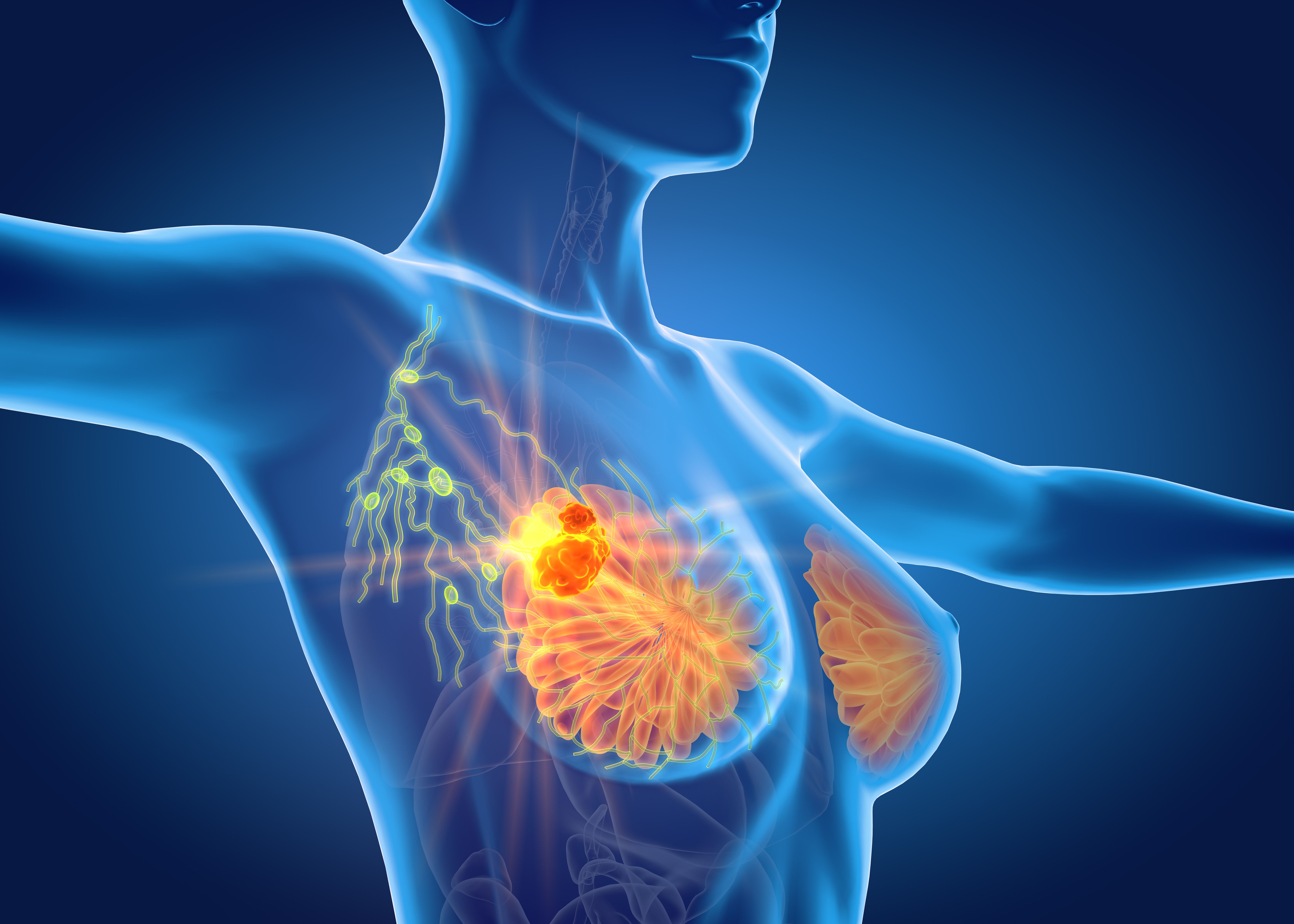Forgoing Select Lymph Node Dissection Linked With Superior Outcomes in Early-Stage Breast Cancer
Updates from the ongoing INSEMA trial suggest that patients with early-stage breast cancer maintain superior quality of life by forgoing sentinel lymph node biopsy and axillary lymph node dissection.

Patients with early-stage breast cancer who did not undergo either a sentinel lymph node biopsy (SLNB) or axillary lymph node dissection (ALND) experienced superior quality of life compared with patients in the same population who received these operations, according to data presented from the INSEMA trial (NCT02466737) during the 2021 San Antonio Breast Cancer Symposium. Despite these findings, data also suggested that patients experienced improved arm symptoms and functioning with SLNB vs ALND.
The findings from the INSEMA trial were presented at the 2021 San Antonio Breast Cancer Symposium by Bernd Gerber, MD, from the Department of Obstetrics and Gynecology at the University of Rostock in Germany.
In the study, researchers assessed patient-reported outcomes (PROs) at baseline—which was administered pre-surgery—as well as at 1, 3, 6, 12, and 18 months after final axillary surgery. They used the European Organization for Research and Treatment of Cancer Quality-of-Life Questionnaire (EORTC QLQ-C30) and its breast cancer (BR23) module to assess patient quality of life (QoL).
Postoperative whole-breast irradiation was required for all participating patients. Ipsilateral axillary region was not included in the clinical target volume.
In a first randomization of 5154 patients, there was an SLNB group (n = 4124) and a no SLNB group (n = 1030). Among them, 3565 patients had a negative sentinel node or only micro-metastases. Only 12 patients in the SLNB group had 4 or more affected lymph nodes, “which is an extremely low rate for this population,” Gerber said during a presentation of the data.
There were 478 patients with macro-metastasis in 1-3 sentinel lymph nodes; these patients were included in a second randomization of either SLNB alone or completion ALND. Overall, the whole study population was a low-risk cohort, Gerber said.
Both the first and second randomizations had well-balanced patient treatment arms in terms of age, tumor size, grading, tumor type, and other tumor characteristics.
In the first randomization, researchers found that there were significant differences in scores for breast symptoms and arm symptoms, favoring the no SLNB group when assessed post-baseline (breast symptoms: P[arm] <.001; P[time] <.001; P[arm*time] = .470, arm symptoms: P[arm] <.001; P[time] = .017; P[arm*time] <0.001). However, the scores were only clinically meaningful for arm symptoms.
In the second randomization, they found no relevant differences in global health status (GHS), functional scales, and body image scales/items between the SLNB group and the complete ALND group. There were also no meaningful differences for breast symptoms between the cohorts (QLQ-BR23 breast symptoms: P[arm] = .295; P[time] <0.001; P [arm*time] = .096).
“Because of the high case number, some small differences reached statistical significance, but these differences were clinically not meaningful,” Gerber said.
There were, however, significant and clinically meaningful differences for the arm symptom scores, which were better in the SLNB group (QLQ-BR23 arm symptoms: P[arm] <.001; P[time] = .618; P[arm*time] = .150).
In looking specifically at arm symptoms, Gerber noted that meaningful lower pain and arm or shoulder scores, swelling in arm or hand, and arm mobility favored no SLNB when compared with SLNB in the first randomization.
For the second randomization, SLNB alone had better outcomes in these categories than complete ALND.
“As expected, the biggest differences were seen directly after surgery,” Gerber said. “Patients in the sentinel node biopsy alone group on second randomization had improved arm symptoms and functioning compared to those receiving complete axillary lymph node dissection. The main difference was seen for swelling in the arm and hand.”
Notably, he pointed out that the curve of lymphedema scores for patients with no SLNB and SLNB is slightly increasing over the time. However, for patients with a completion ALND, the increase was more pronounced and sharper.
There were no other QoL differences found to be relevant by the investigators. Outcome data are expected to be completed in 2024.
Reference
- Gerber, B; Stachs, A; Veselinovic, K; et al. Patient-reported outcomes (PROs) for the intergroup sentinel mamma study (INSEMA, GBG75, ABCSG43): Persistent impact of axillary surgery on arm and breast symptoms in early breast cancer. Presented at: 2021 San Antonio Breast Cancer Symposium; December 7-10, 2021; San Antonio, TX. Abstract GS4-03.



